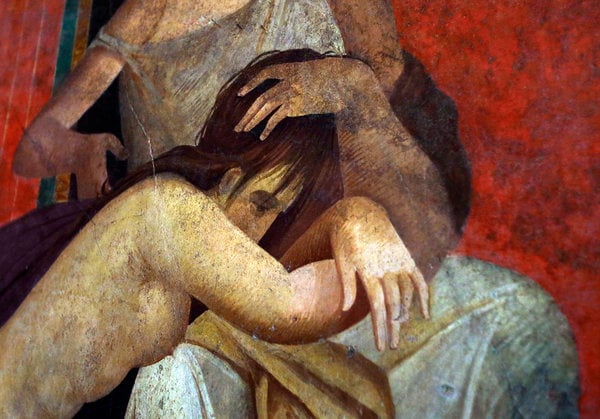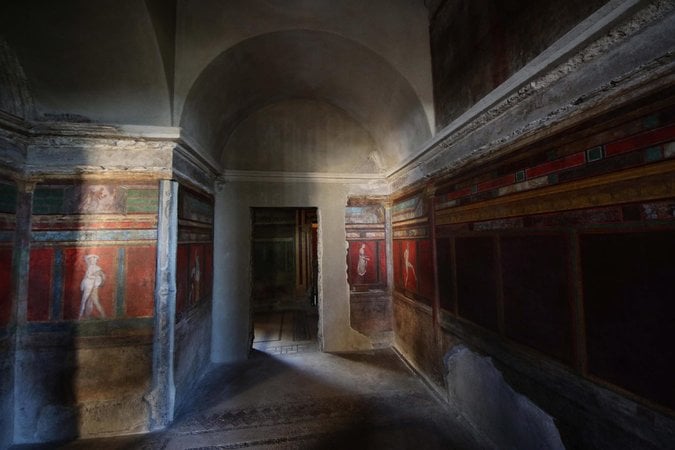Art & Exhibitions
Pompeii Unveils Restoration of Dionysian Frescoes at Villa of Mysteries


Sarah Cascone

This weekend marked the reopening of Pompeii’s Villa of Mysteries after two years and €900,000 ($973,600) worth of careful restorations to the building’s ancient frescoes and mosaics.
The villa is one of the best-preserved homes in Pompeii, which was buried in the ashes of the eruption of Mount Vesuvius in 79, and remained lost until its excavation in 1748. The Villa of Mysteries is best-known for its brightly-colored red and orange paintings of life-size figures, believed to depict the initiation rights of the cult of Dionysus, the wine god.
Lasers and ultrasound and thermal imagery were used to analyze the frescoes and their level of deterioration. Painstaking restorations returned the darkened images to their original vibrant tones, reversing damage caused by historic preservation measures that applied wax to the paintings.
There has been cause for concern in Pompeii in recent years as heavy rainfall has caused several structures to collapse (see Can Italy Save Pompeii? Emergency Funding for Damaged Archaeological Site May Not Be Enough). The popular tourist attraction has also been plagued by sticky fingers (see US Tourists Steal Pompeii Artifact and Fresco of Artemis Stolen from Pompeii).

The Villa of Mysteries, Pompeii.
Photo: Cesare Abbate, courtesy European Pressphoto Agency.
Italian culture minister Dario Franceschini, was pleased to have a positive development at the archaeological site, pointing out to the New York Times how quick the media had been to “shine a spotlight on Pompeii every time something negative happens.” This time around, he hopes word would spread about the restoration of “a pearl.”
“This is the most ambitious restoration ever because it involved all the rooms,” added Massimo Osanna, the culture ministry official in charge of the site.
While the UNESCO World Heritage Site has received €105 million ($111 million) in EU funds for the Great Pompeii Project (money Franceschini promises will be spent before the fund expires at the end of the year), Italy’s prime minister, Matteo Renzi, has also called on the private sector to chip in to help preserve Pompeii for future generations (see Italian Prime Minister Calls on Private Sector to Fund Pompeii Restoration). In response, the site is now being monitored by satellites and ground sensors in the hopes of predicting and preventing future collapses (see Can Satellites Save Pompeii?).